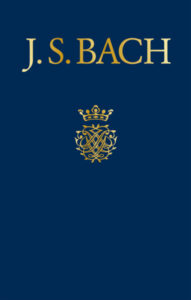The new BWV3
The third, expanded new edition of the Bach-Werke-Verzeichnis incorporates the research of the last 30 years and proposes a new kind of differentiation.

Even many professional musicians are unaware that the BWV numbers used to identify Bach's compositions date back to the Bach year 1950. At the time, Wolfgang Schmieder classified Johann Sebastian Bach's works by genre and assigned the numbers according to the order of the individual pieces in the old Bach edition (1851-1899). Schmieder's epoch-making achievement was updated in 1990. As early as 1998, Bach researchers Alfred Dürr and Yoshitake Kobayashi presented their condensed alternative.
A lot has happened in Bach research since then: new sources have emerged, doubts about authenticity have been raised or dispelled, dates have been confirmed or corrected, and so on. The Bach literature has grown immeasurably, and the Internet provides full texts, bibliographies and even original prints and manuscripts. A newly revised and updated BWV could no longer be produced by a single person; an entire institute, the Bach Archive Leipzig, stood behind the three main authors, and the work took more than ten years. The result is an 880-page volume that still follows Schmieder's genre categories, adopts the long-established numbers and places newly discovered works in consecutive order where they belong according to their function and instrumentation. Also new are a systematic overview of Bach's entire oeuvre, which does not consistently follow the BWV numbers, and various concordances and catalogs, for example of Bach's (reconstructable) music library. A new feature of this index is the division into different versions of a single work. The work history of the cantata is thus divided into Swing joyfully upwards into stages 36.1 to 36.5, and the two versions of cantata 82 for bass and soprano respectively are designated 82.1 and 82.2. This is intended to put a stop to the uncontrolled growth of the addition of a, b and r designations to BWV numbers.
This procedure reaches its limits when certain purely written "Brandenburg" concertos are to be designated as BWV 1046.2, for example, because an early version 1046.1 exists for them, while for others a four-digit number simply applies, such as BWV 1047. What has been completely omitted are the references to individual works, as the online catalogs are now able to step in here. Nevertheless, the scarcity of explanations worth knowing goes so far that in more complicated and therefore also more interesting cases, detailed knowledge is required to be able to understand them at all. It is doubtful whether any progress has been made in terms of user-friendliness. It is not clear how the "integration with the relevant online databases" announced in the publisher's advertising has been achieved.
So this BWV also remains3 In view of its purchase price, it is probably a matter for a few specialists, while practitioners today can easily identify the works with the help of the Internet or the usual editions of works.

Christine Blanken, Christoph Wolff, Peter Wollny: Bach-Werke-Verzeichnis. Third, expanded new edition (BWV3), XLIV + 835 p., € 459.00, Breitkopf & Härtel, Wiesbaden 2022, ISBN 978-3-7651-0400-8







